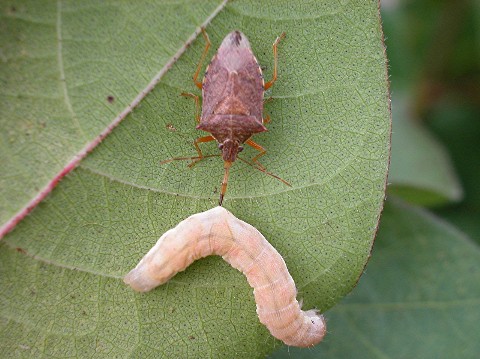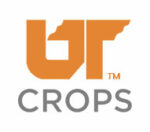LINKS
Spined Soldier Bug
Scott Stewart (University of Tennessee), Department of Entomology and Plant Pathology
General Comments:
 The spined soldier bug, Podisus maculaventris, is a predatory stink bug that is sometimes found in cotton, soybean and other crops. These predators can be easily confused with plant feeding stink bugs such as the brown stink bug. Thus, it is important that scouts learn to recognize this as a beneficial insect rather than a pest.
The spined soldier bug, Podisus maculaventris, is a predatory stink bug that is sometimes found in cotton, soybean and other crops. These predators can be easily confused with plant feeding stink bugs such as the brown stink bug. Thus, it is important that scouts learn to recognize this as a beneficial insect rather than a pest.
Description:
Adult spined soldier bugs are medium sized (9-13 mm long) and brown in color. They are shield shaped with a prominent spine extending outward from each “shoulder.” Unlike plant feeding species, the tips of the wings tend to extend well past the abdomen, and there is often a dark line at the wing tips where they overlap. These predators have a strong, stout beak relative to plant feeding stink bugs which have more slender beaks. The beak is kept folded under the body unless feeding. The eggs of spined soldier bugs are laid in a loose mass of 17-70 eggs. Each egg has a characteristic crown of “spines” that rings its top. Immature (nymphal) stages are more rounded in shape. Small nymphs have a black head and thorax with a red abdomen. Larger nymphs vary in color considerably as they grow; the abdomen may be tan to reddish-orange in color with red, white and/or black markings.
Prey:
Spined soldier bugs are generalist predators but are most commonly observed in fields where caterpillar and leaf beetle larvae are present. Both the nymphs and adults feed on pests such as tobacco budworm, bollworm, soybean looper, fall armyworm and beet armyworm. This species will feed on other predatory insects and is also cannibalistic.
Reference:
University of Florida, Department of Entomology and Plant Pathology, Featured Creatures







